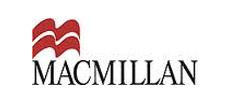- View more resources from this publisher
 Royal Statistical Society Centre for Statistical Education
Royal Statistical Society Centre for Statistical Education
Practical statistics
This resource provides a large number of practical statistical activities to find a statistical model to fit a particular situation and is designed for use in the A-level classroom.
The first chapter contains an overview of basic statistical techniques such as collecting and organising data. Different methods of representing data are outlined; histograms, frequency polygons, stem and leaf diagrams, pie charts and cumulative frequency diagrams. The use of calculations is then considered including use of the mode, the median from different types of data, the mean from different types of data, the range, interquartile range, the use of box and whisker diagrams, variance and standard deviation. The resource continues by describing a number of practical activities to explore probability, including relative frequency, theoretical probability and the use of tree diagrams. Further practical activities explore the Binomial Distribution, the Poisson distribution and the normal Distribution. Sampling techniques are discussed; random samples, stratified sampling and sampling from finite populations. Estimating proportions looks at the use of opinion polls and sample analysis whilst the nest two sections consider hypothesis testing. Activities designed to explore the concept of correlation are considered using the product moment correlation coefficient, bivariate distribution tables and rank correlation. Linear regression is investigated along with chi-squared tests and the exponential distribution. The resource concludes by discussing the use of simulations and suggesting further ideas for practical investigations and longer projects.
This resource was published by Macmillan for the Centre for Statistical Education Sheffield under Crown Copyright in 1989.
Show health and safety information
Please be aware that resources have been published on the website in the form that they were originally supplied. This means that procedures reflect general practice and standards applicable at the time resources were produced and cannot be assumed to be acceptable today. Website users are fully responsible for ensuring that any activity, including practical work, which they carry out is in accordance with current regulations related to health and safety and that an appropriate risk assessment has been carried out.
Downloads
-
Practical statistics 9.9 MB





